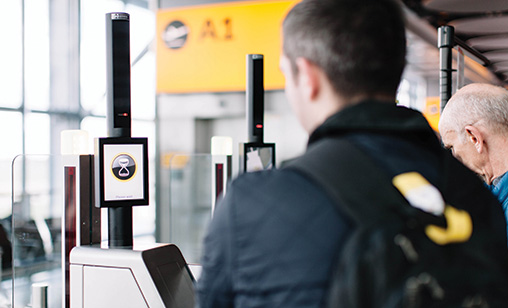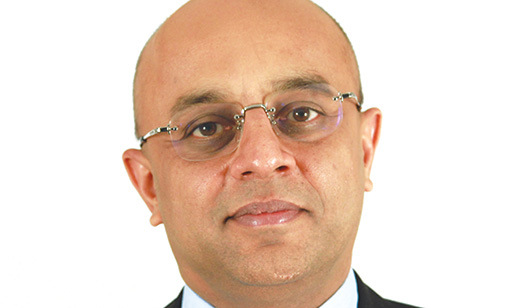Main Story
Technology critical to congestion cure
Technology as well as bricks and mortar will ease the region’s infrastructure problems, the International Air Transport Association tells Chief correspondent, Tom Ballantyne.
June 1st 2018
When the leaders of the world’s airlines gather in Sydney this month for the 74th Annual General Meeting of the International Air Transport Association (IATA) a potential infrastructure crisis, particularly in the Asia-Pacific, will once again be an important part of the discussions - and understandably so. Read More »
As air passenger numbers set new records in the region every year, airports across the Asia-Pacific are bursting at the seams as saturated hubs have to function well beyond their design capacity.
 |
This situation goes to the heart of the operations of Asia-Pacific carriers whether they are full service airlines, low-cost carriers or hybrids of both. The airlines have ordered thousands of new aircraft to accommodate new passenger demand, but at present it looks like their expanded fleets will not have slots to land at destinations their passengers want to go.
Are there ways to ease this congestion while the necessary physical infrastructure is built at the region’s airports?
IATA Asia Pacific’s regional director airport, passenger, cargo & security, member & external relations, Vinoop Goel believes so. “Air traffic in the region is forecast to increase from one billion annually today to three billion a year by 2037-38,” he said.
“An additional two billion passengers over the next twenty years raises both opportunities and challenges. Airlines have been gearing up for that capacity with aircraft orders of 600 to 700 aircraft per year in the last few years. What is worrying us is that countries cannot build enough airports or expand enough airports to add capacity for two billion more passengers in this time frame.
“If you look at it from a holistic viewpoint, while airports are being built you must maximize the capabilities of the existing infrastructure by implementing new processes and new technology.”
Goel said technology will definitely be a critical part of the solution. “The biggest bottlenecks are on the ground. If you look at a number of airports across the region many of them are operating way beyond capacity even today.
“The three biggest bottlenecks are Bangkok, Jakarta and Manila, but there are others. Some airports have started working on plans to add capacity and some, including Changi, Narita and Singapore already have added it.
In the meantime, said IATA, today’s buzz word is biometrics where the application of new data provides real time information exchange that speeds passenger processing.
“Today if it takes 30 minutes to process a passenger from kerb side to boarding my new biometric automated process could do the same procedure in 10 minutes and I have tripled my capacity,” said Goel.
“There are trials happening in Sydney, Brisbane, Incheon and Bangalore. A number of airports realize this is a faster method of adding capacity than building a new terminal. You may need a new terminal in the longer term, but in the short to medium term some of these new technologies can help.”
Industry experts pointed out this was all very well but speeding up passenger processes on the ground does not help on time performance if there are bottlenecks at the gate or on taxiways and runways.
Goel said: “The problem has to be looked at from an end-to-end point of view. You have to look at things like ground-handling, push-back and your gates.
| 'There are manpower shortages in a number of countries that can be addressed with new technology. With automation you can reduce your manpower requirements or redeploy your existing manpower to provide more value added services. Changi has been a leader by implementing some very advanced biometric functions' |
| IATA Asia-Pacific |
“This is where some of the new technology, such as airport collaborative decision-making (ACDM) is valuable. It is intended to make the aircraft turnaround more efficient, better planned and better served. It has been done in Europe for a while.
“Now we are seeing a number of implementations in this part of the world. Changi has been one of the leaders in this area. ACDM required collaboration between the ground, the airport, air traffic control and the airline.
“All parties involved in the aircraft turnaround have the information so aircraft departures, aircraft arrivals at the gate and the taxi-ing can be planned to optimize your capacity.”
Technology measures aside, several governments in the region realize clogged airports and air traffic pathways hold back economic growth. They are becoming less risk averse about investing in multi-billion aviation infrastructure.
Jakarta’s Soekarno-Hatta International Airport is one of the region’s most seriously congested facilities. Indonesia’s state-owned airport operator, PT Angkasa Pura II (AP), is acquiring the land required to build a third runway at country’s capital city airport. A third runway would boost the airport’s capacity to 100 million passengers by 2025, AP said.
AP II president director, Muhammad Awaluddin, said the US$189 million project was designed to increase the take-off and landing frequency of aircraft into Jakarta from 81 movements an hour to 114.
In Delhi, Airport Authority of India has announced it will invest US$3 billion to 2023 to upgrade the infrastructure of 21 airports across the country. In April, the military junta that runs Thailand said it would spend in excess of $1.2 billion to renovate and expand 29 Thai airports.
Thailand’s Airports Department director-general, Darun Sangchai, said officials had held discussions with Thai Airways International (THAI), Nok Air, Thai Lion Air, Thai AirAsia, THAI Smile and Bangkok Airways about airport expansion.
Neighbouring Malaysia plans to double Kuala Lumpur International Airport’s capacity to 150 million in the next 10 to 20 years, Malaysia Airports Holding Berhad chief financial officer, Raja Azmi Raja Nazuddin said.
As recently as March Tokyo Narita’s airport, which has long suffered from an infrastructure shortfall, received approval to expand its annual arrival and departure slots from 300,000 to 500,000. Agreement also was reached to extend the Greater Tokyo airport’s operating hours to 5 am to 12.30 am, increase its runway length to 3,500 metres and build a third runway.
Elsewhere, new airports have been completed or are close to completion. Pakistan’s biggest and first greenfield airport, Islamabad International Airport, commenced business in May after years of delay.
The new facility replaced the creaking Benazir Bhutto International Airport (BBIA) in the twin city of Rawalpindi. Designed to process 15 million passengers a year in its initial phase the airport will accommodate up to 25 million travellers after a second stage of expansion. The BBIA handled 4.7 million passengers last year.
 |
In China, 66 airports will be built in the next five years, which will increase air passenger and cargo facilities to 272. China invested a minimum of $11.7 billion on civil aviation infrastructure last year. The landmark project of the strategy will be Beijing’s new international airport, which will commence test operations as early as October next year.
The airport, on the border between southern Daxing district in Beijing and Langfang, a city in Hebei province, will have a terminal complex of 313,000 square metres and four runways to accommodate 620,000 flights a year.
Half of the world’s top 20 airports in passenger numbers are in the Asia-Pacific. Beijing Capital is the world’s second busiest airport, with 96 million passengers a year, and is forecast to topple Atlanta-Hartsfield-Jackson (104 million) at the top of the league in the near term.
Other Asian hubs on the top 20 list are Tokyo Haneda (85 million), Hong Kong International (73 million), Shanghai Pudong International Airport (70 million), Guangzhou Bai Yun International (66 million), Indira Gandhi International (63.5 million), Soekarno-Hatta International (63 million), Singapore Changi (62.22 million) and Incheon International (62.16 million).
Growth at many big airports has been spurred by the expansion of low-cost carriers and the surge in outbound China travelers. In April, Airports of Thailand (AoT) announced a plan to demolish a disused terminal at Bangkok’s original international airport, Don Mueang, and replace it with a facility that could cope with the ever growing numbers of international airlines and passengers using the airport.
International travelers to Thailand, mostly Chinese tour groups, spiked by 14% last year compared with a one per cent increase in domestic travelers in the same 12 months. If the AoT board approves the project, terminal 3 is planned to open in three years.
The combination of global Chinese traveler growth and the region’s unrelenting demand for budget travel has resulted in new LCC terminals at Japan’s Narita and Osaka airports with Nagoya committed to follow their example.
The huge costs of airport development make it difficult for many governments in the region to fit the expenditure into their short to medium term budgets, which is why public/private partnerships are favoured in some quarters.
India has privatized the nation’s two biggest aviation hubs, Mumbai and New Delhi, and also Bangalore and Hyderabad. It is considering shifting 15 profitable airports, including Chennai and Ahmedabad, to private management.
“The Prime Minister’s Office has directed the Department of Economic Affairs to prepare a model mechanism for taking certain airports out of the control of Airports Authority of India and handing them to private players,” a government statement said earlier this year.
Analysts said the latest wave of privatization would drastically improve airport infrastructure in the country. “This is, by far, the best solution to improve airport infrastructure. If the government does come out with a proper model agreement, I am sure it will receive an immense response from many Indian players that have a lot of appetite left,” said managing director and chief executive at infrastructure advisory firm Nestor Consulting, Sanhay Sethi.
| Benefits of government controlled airports IATA is not overly keen on the privatization of airports because it believed the model resulted in higher costs for airlines. It remains focused on a campaign to convince governments to fast track airport development as a benefit to their national economies. “When we talk about growth the beneficiaries of all this are the countries in terms of aviation’s contribution to GDP and jobs,” said Goel. “It is hard economic numbers. We try to provide information to many of the States in the region by saying ‘this is what aviation contributes to your economy today, this is what it can potentially contribute over the next twenty years and here are your bottlenecks. There is a good reason why you need to address this to reap the social and economic benefits of aviation’.” |